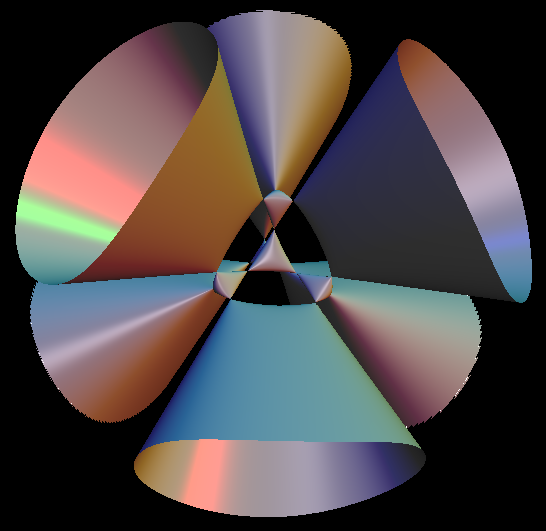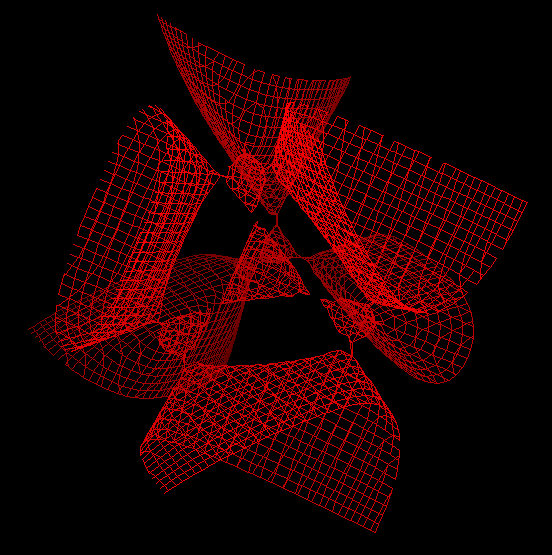Kummer Quartic

A Kummer surface is any one of a one parameter family of algebraic surfaces defined by the polynomial equation of degree four:
(x^2 + y^2 + z^2 - b^2)^2 - λ*p*q*r*s = 0. Here b is any real number. λ = (3*b^2 - 1.0)/(3 - b^2) p = 1 - z - Sqrt[2]*x q = 1 - z + Sqrt[2]*x r = 1 + z + Sqrt[2]*y s = 1 + z - Sqrt[2]*y
The formula fully expanded looks like this: -(((-1 + 3*b^2)*(1 - Sqrt[2]*x - z)*(1 + Sqrt[2]*x - z)*(1 - Sqrt[2]*y + z)*(1 + Sqrt[2]*y + z))/(3 - b^2)) + (-b^2 + x^2 + y^2 + z^2)^2
The family was described originally by Ernst Eduard Kummer In 1864.
A Kummer surface has sixteen double points, the maximum possible for a surface of degree four in three-dimensional space. For the default case b = 1.3, all these double points are real and they appear in the visualization as the vertices of five tetrahedra.
